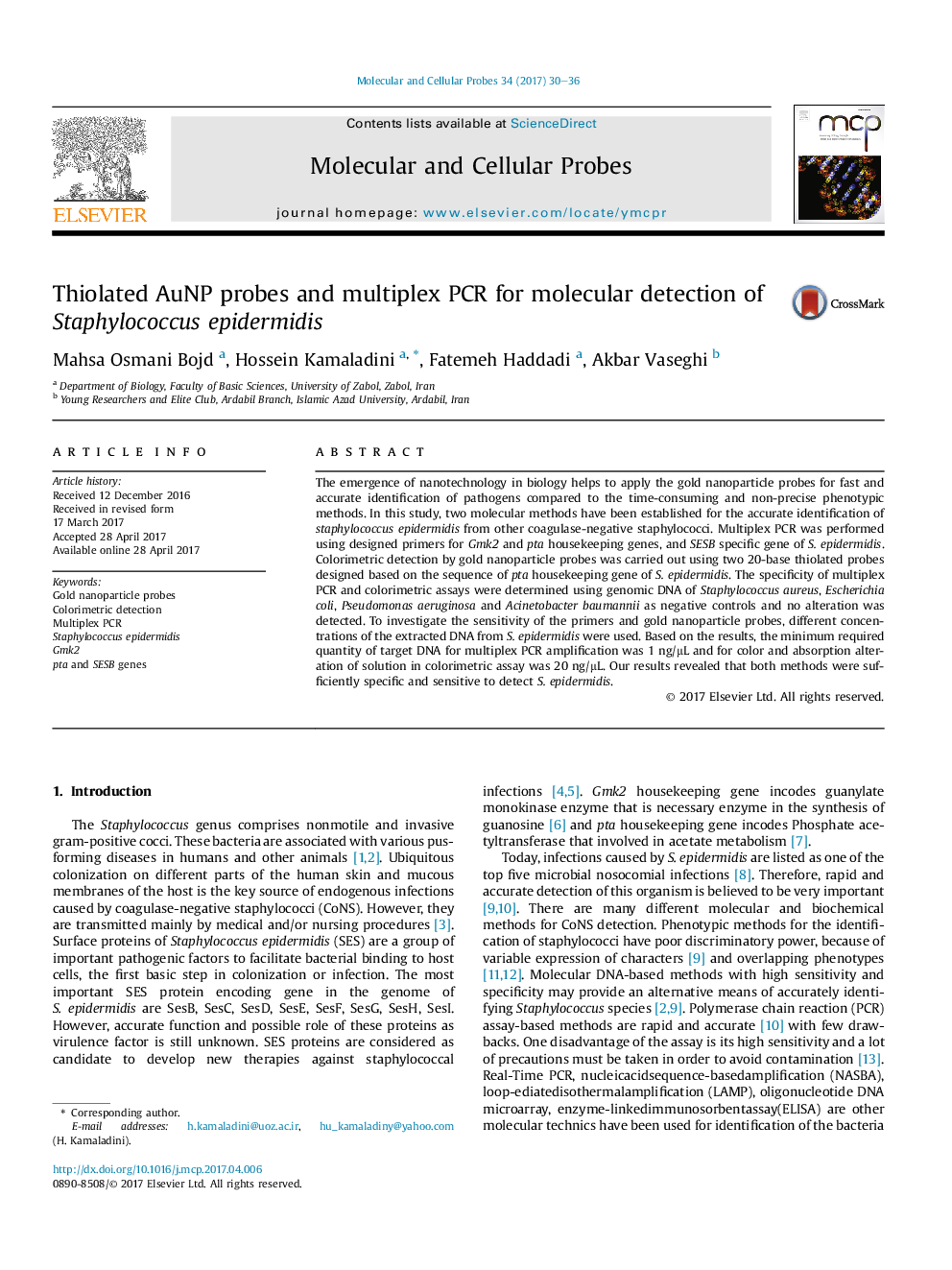| Article ID | Journal | Published Year | Pages | File Type |
|---|---|---|---|---|
| 5534530 | Molecular and Cellular Probes | 2017 | 7 Pages |
â¢Colorimetric and multiplex PCR assays were applied for molecular detection of S. epidermidis.â¢Multiplex PCR by Gmk2 and pta and SESB genes showed high sensitivity and differentiation from other bacteria.â¢Absorption and color alteration were achieved in presence of two thiolated AuNP probes of pta gene and the genomic DNA.â¢Minimum required quantity of DNA for multiplex PCR and colorimetric detection were 5 ng/mL and 20 ng/mL, respectively.
The emergence of nanotechnology in biology helps to apply the gold nanoparticle probes for fast and accurate identification of pathogens compared to the time-consuming and non-precise phenotypic methods. In this study, two molecular methods have been established for the accurate identification of staphylococcus epidermidis from other coagulase-negative staphylococci. Multiplex PCR was performed using designed primers for Gmk2 and pta housekeeping genes, and SESB specific gene of S. epidermidis. Colorimetric detection by gold nanoparticle probes was carried out using two 20-base thiolated probes designed based on the sequence of pta housekeeping gene of S. epidermidis. The specificity of multiplex PCR and colorimetric assays were determined using genomic DNA of Staphylococcus aureus, Escherichia coli, Pseudomonas aeruginosa and Acinetobacter baumannii as negative controls and no alteration was detected. To investigate the sensitivity of the primers and gold nanoparticle probes, different concentrations of the extracted DNA from S. epidermidis were used. Based on the results, the minimum required quantity of target DNA for multiplex PCR amplification was 1 ng/μL and for color and absorption alteration of solution in colorimetric assay was 20 ng/μL. Our results revealed that both methods were sufficiently specific and sensitive to detect S. epidermidis.
